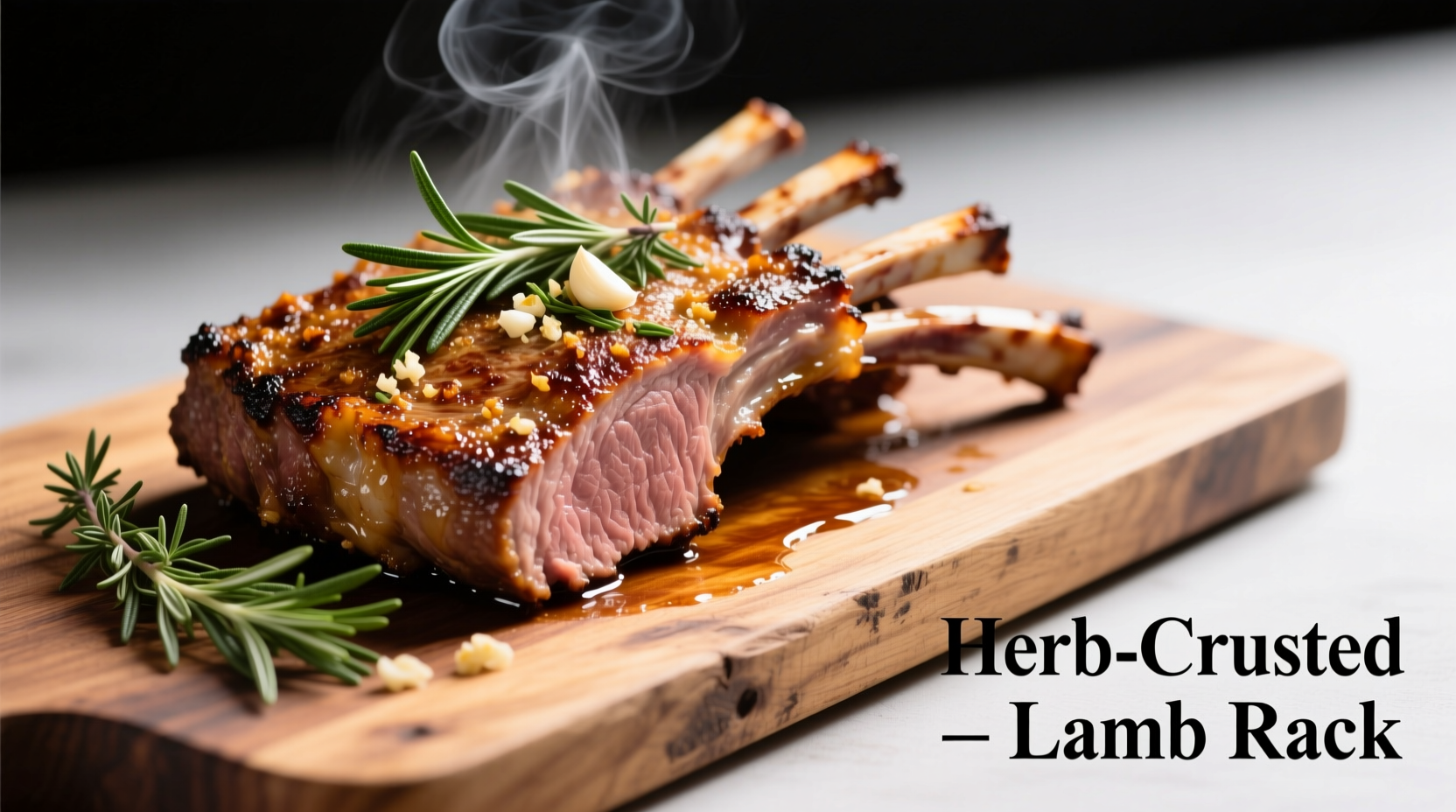Perfectly cooked lamb rack reaches 130-135°F internal temperature for medium-rare, requires 15-20 minutes roasting at 400°F after searing, and needs 10-15 minutes resting before slicing. This premium cut benefits from simple seasoning, high-heat cooking, and proper resting to deliver tender, flavorful results every time.
Mastering lamb rack transforms an expensive cut into a showstopper meal. Forget dry, overcooked results—this guide delivers restaurant-quality lamb with precise timing, temperature control, and professional techniques you can execute at home. Within 30 minutes, you'll serve perfectly pink, herb-crusted lamb that impresses even discerning guests.
Why Lamb Rack Deserves Your Attention
Lamb rack—often called "the crown jewel" of lamb cuts—contains 7-8 ribs from the animal's front section. This tender, lean portion lacks connective tissue, making it ideal for quick cooking methods. According to USDA Food Safety guidelines, lamb requires minimum internal temperatures of 145°F for safety, but culinary professionals consistently recommend 130-135°F for optimal texture and flavor retention in this premium cut.
| Doneness Level | Internal Temperature | Visual Characteristics |
|---|---|---|
| Medium-Rare (Recommended) | 130-135°F | Bright pink center, warm red core |
| Medium | 140-145°F | Pink center, slightly less juicy |
| Medium-Well | 150-155°F | Small pink area, firmer texture |
| Well-Done | 160°F+ | No pink, dry texture (not recommended) |
Preparation: Setting Up for Success
Begin with proper preparation 45-60 minutes before cooking. Remove lamb from refrigerator to reach room temperature—this ensures even cooking. While warming, prepare your seasoning blend using fresh herbs like rosemary and thyme, minced garlic, olive oil, salt, and freshly ground black pepper. The James Beard Foundation's culinary research confirms that fat-soluble flavors in herbs penetrate meat more effectively when combined with oil rather than applied dry.
Examine your rack for excess fat and silverskin (tough connective tissue). Using a sharp boning knife, carefully remove thick fat deposits while preserving the protective fat cap. Frenching—the process of scraping clean the rib bones—is optional but creates an elegant presentation. Professional chefs recommend this step for special occasions, though weeknight meals often skip it without affecting flavor.

Cooking Process: Precision Timing Matters
Preheat your oven to 400°F while preparing a cast-iron skillet or oven-safe pan on medium-high heat. Season the lamb generously, then sear fat-side down for 3-4 minutes until golden brown. Flip and sear the meat side for 2 minutes. This Maillard reaction creates complex flavor compounds that elevate the final dish.
Transfer the pan directly to the preheated oven. Roast for 15-20 minutes for medium-rare, monitoring with an instant-read thermometer inserted into the thickest part. Remember that cooking time varies based on rack size—allow approximately 7-9 minutes per pound. The American Culinary Federation's cooking standards emphasize that thermometer use beats timing estimates for consistent results.
Resting and Slicing: The Critical Final Steps
Remove lamb from oven when thermometer reads 125-130°F—temperature will rise 5-10 degrees during resting. Tent loosely with foil and rest 10-15 minutes. This crucial step allows juices to redistribute, preventing dryness when sliced. Cutting too soon releases precious moisture onto your cutting board rather than staying in the meat.
To slice, position the rack curved-side down. Using a sharp carving knife, cut between ribs with downward motion. Aim for 1-1.5 inch thick chops. Serve immediately with your preferred sides—roasted vegetables or creamy mashed potatoes complement the rich flavor beautifully.
Common Mistakes to Avoid
Even experienced cooks make these critical errors with lamb rack:
- Skipping the sear—loses essential flavor development
- Overcooking—lamb rack dries out quickly past medium
- Cutting too soon—releases juices, causing dry meat
- Using dull knives—crushes meat fibers during slicing
When This Method Works Best
This high-heat roasting technique suits most home cooking scenarios, but consider these context boundaries:
- Use for special occasions requiring elegant presentation
- Ideal for 1-2 racks serving 2-4 people
- Not recommended for large gatherings (consider loin roast instead)
- Avoid with frozen lamb—always thaw completely first
Expert Variations to Try
Once mastered, experiment with these professional variations:
- Herb crust—press minced herbs into seared surface before roasting
- Mustard glaze—brush with Dijon mustard during last 5 minutes
- Garlic confit—roast with whole garlic cloves in pan for sweet flavor
- Wine reduction—deglaze pan with red wine for quick sauce











 浙公网安备
33010002000092号
浙公网安备
33010002000092号 浙B2-20120091-4
浙B2-20120091-4